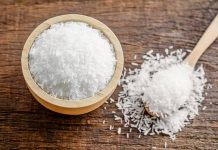When you look in the mirror, you see the same face every time. If you look closely, your skin has started to change.
The differences might be minor, or you’re already seeing some big ones. As early as your 20s, your youthful glow can start to fade.
No matter how old you are, it’s never too late to start battling your age clock. Each decade might bring more changes, but it also offers more methods for slowing the visible passage of time.
Five Top Skin Concerns
Consider these skin changes you’ll experience throughout life, and talk with your dermatologist about your best skincare options.
#1. The Taut-Skin 20s
If you glance in the mirror, you may see your high school self. You’re still enjoying tight, wrinkle-free skin.
You could still be battling an oily T-zone and blackheads that require frequent acne treatment.
Upon closer examination, you may notice the beginnings of sun damage and some increased dryness.
Don’t worry. Your skin routine doesn’t need to change much at this point. Wash your face with a gentle cleanser. Exfoliate your skin 1-2 times weekly with glycolic acid-containing pads to remove dead skin cells.
Drink lots of water to stay hydrated. That’s good advice for all ages. Then, double down by using a non-comedogenic moisturizer twice daily, preferably containing SPF 30.
There is one new thing: Start paying attention to your hands. You don’t want them to look 50 when you’re 25. Apply moisturizer and sunscreen to your hands just as you do to your face. Your skin will stay smoother, softer, and spot-free for longer.
#2. Those Fine-Line 30s
By now, you’ve mostly kissed acne goodbye (probably). Instead, you’ve traded it for fine lines and some darker spots on your skin called pigmentation.
Yippee! Your existing skincare routine is still pretty good, but it’s time to add a few new elements to the mix.
If you want to banish those fine lines, add retinol-containing products. They encourage the production of collagen, improving your skin’s firmness.
Remember that retinol can dry you out, so be sure you’re also using a good moisturizer. You may also start seeing more sun damage when peeking in the mirror.
Add an antioxidant, such as vitamin C, to your routine to combat the appearance of existing and future skin injuries.
When it comes to reducing pigmentation, you have several options. Your dermatologist can offer chemical peels, microdermabrasion, and laser resurfacing to remove older skin cells and encourage more collagen production.
Want a home remedy? Apply diluted apple cider vinegar to the spots for several minutes or pure aloe overnight. Daily topical use of green tea extract can also be effective.
#3. Those Skin-Drooping 40s
You’ve finally hit the big 4-0. Your career is rocking along at a nice steady pace. Guess what? So is your aging.
Your wrinkles are more profound, and your cheeks are losing volume. That’s just another way of saying your skin is starting to sag (ugh!). Before you get too stressed, take a deep breath. You can fight back.
Consider the chemical peels and laser resurfacing mentioned above if you haven’t already. Talk to your dermatologist about adding a dermal filler or Botox as facial pick-me-ups.
Gently exfoliate a couple of times weekly to revitalize your skin. Use hyaluronic acid-containing products daily (especially after exfoliation) to maximize moisture retention.
You’ll also need to elevate your night cream choice. Look for one that contains glycerin, fatty lipids, and ceramides. Those ingredients will strengthen your skin.
#4. The Sunspot 50s
Once you’re in your 50s, your skin changes intensify, and some new ones appear. Sunspots show up more visibly. A close look in the mirror may even reveal larger pores.
Plus, your skin is noticeably drier and thinner than before. You’ll need to beef up your skin routine to handle all these differences.
If you haven’t pulled the trigger on Botox treatments, consider making an appointment with your dermatologist.
It can add volume to your cheeks, reducing the appearance of sagging skin. Microneedling is another way to bump up your collagen and plump up your face.
Now is the time to take a gentler approach to your skin products. Find a milder facial cleanser that doesn’t lather up too much.
Something too sudsy will strip away your skin’s remaining natural oils. With thinner, drier skin, holding onto as much moisture as possible is more important than ever.
If you haven’t pulled the trigger on Botox treatments, consider making an appointment with your dermatologist. It can add volume to your cheeks, reducing the appearance of sagging skin.
Microneedling is another way to bump up your collagen and plump up your face.If you choose to try microneedling, you should also be sure to follow the appropriate aftercare steps to ensure the best results.
#5. The Preservation 60s
Maintenance is the name of the game in your 60s. Keep up with your gentle skincare routine to battle dryness and capture moisture.
Consistently following your regimen is essential to protect your thinning skin. At this point, you may also see age spots (liver spots) pop up.
Even though these discolored spots are harmless, they’re undoubtedly noticeable and not in a good way. They’re flat, often oval-shaped, and can be the size of a freckle or nearly a dime.
The good news is you might already be doing things to reduce their appearance. Retinol-containing products, chemical peels, and microdermabrasion can make them less apparent.
Consider laser resurfacing twice a year. It can also go a long way toward improving their look. You get one face in life.
Taking care of your skin is fundamental to ensuring you always look and feel like yourself. Being aware of possible changes at every age can help you get a jump on taking better care of your skin.
Be consistent in your efforts, and you’ll have a more substantial chance of holding back the hands of time.
- Essential Steps to Finding the Most Effective Skincare Products
- How To Get Rid of Skin Tags
- 7 Treatments for Problem Skin
- 6 Skin Care Tips to Follow This Summer
- Unflawed Skin Reviews: Unflawed Skin Care Cream Reviews
For More Latest Health Updates and Information about Top Skin Concerns, Visit CRECSO NEWS Magazine.










